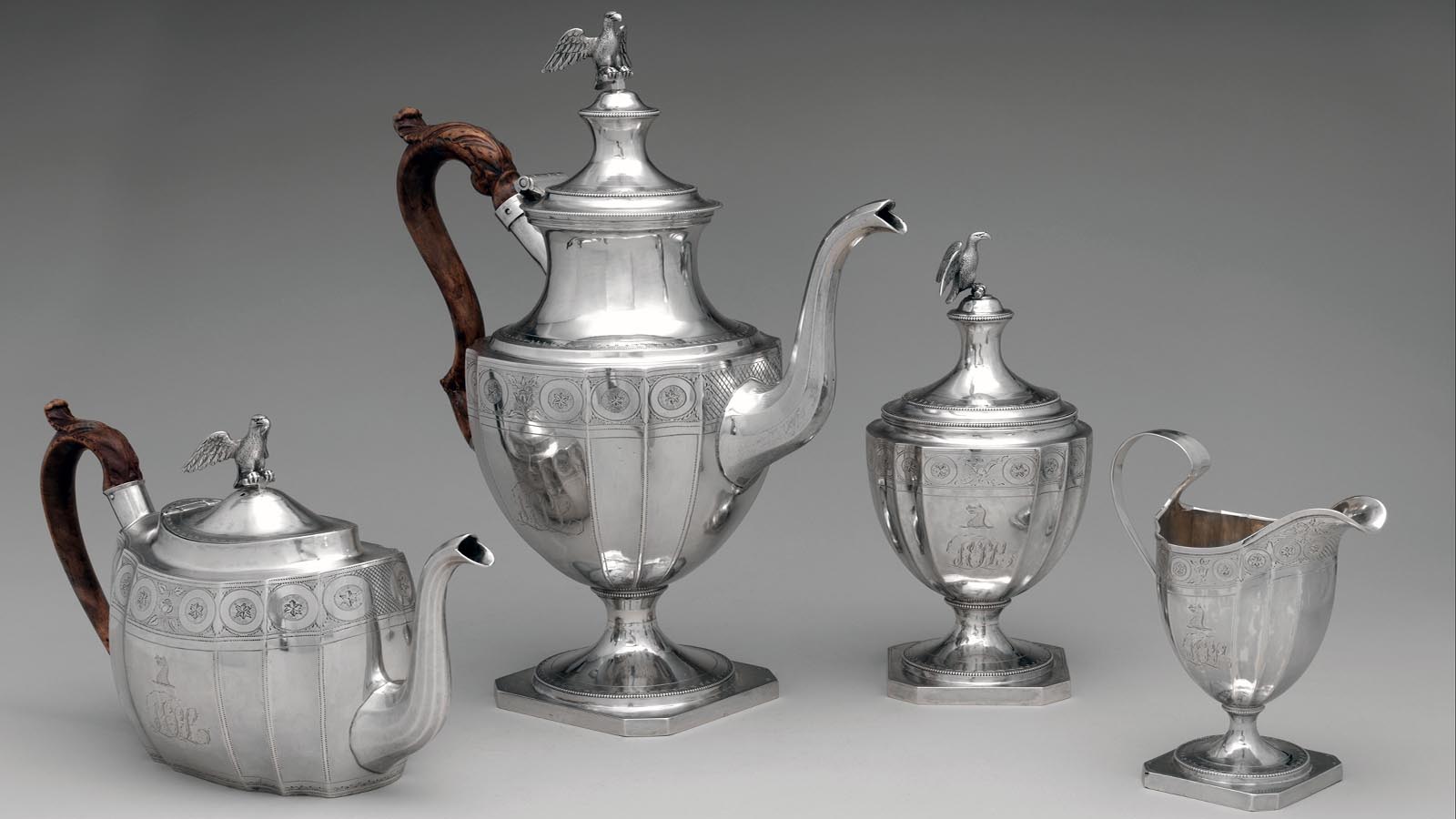
Sterling silver is a popular and versatile metal that has been cherished for centuries. It is known for its stunning shine, durability, and affordability, making it a sought-after choice for jewelry, flatware, and decorative items. In this article, we will explore 19 fascinating facts about sterling silver that you may not be aware of. From its composition and hallmarking system to its historical significance and care tips, we will delve into the intriguing world of this precious metal. Whether you are a jewelry enthusiast or simply curious about the intricacies of sterling silver, these facts will enlighten and entertain you. So, let’s dive in and discover the captivating secrets behind sterling silver!
Key Takeaways:
- Sterling silver is a durable and versatile metal composed of 92.5% silver and 7.5% other metals, making it hypoallergenic and perfect for personalized gifts and commemorative jewelry.
- With its timeless beauty and affordability, sterling silver is a popular choice for engagement rings and can be passed down through generations as beloved heirlooms.
Sterling silver is composed of 92.5% silver and 7.5% other metals.
Unlike pure silver, which is too soft for everyday use, sterling silver combines the lustrous brilliance of silver with the added strength provided by other metals, typically copper.
The term “sterling” originates from an English silver coin.
In the 12th century, the Normans introduced a silver penny called the “esteling,” which later became “sterling.” This coin was known for its exceptional purity and quickly gained popularity.
Sterling silver is hypoallergenic.
Many people who are sensitive to other metals, such as nickel, can comfortably wear sterling silver jewelry without experiencing allergic reactions.
It is stamped with a hallmark to indicate its quality.
In most countries, sterling silver is required to bear a hallmark, a symbol or stamp that verifies its authenticity and quality. Common hallmarks include “925” or “Sterling.
Sterling silver has been used in jewelry making for centuries.
Its popularity dates back to ancient civilizations such as the Egyptians, who crafted intricate sterling silver jewelry adorned with precious gemstones.
The brilliance of sterling silver makes it a popular choice for diamond settings.
The bright white sheen of sterling silver beautifully enhances the brilliance of diamonds, making it an ideal metal for exquisite and affordable diamond jewelry.
Sterling silver is more affordable than gold or platinum.
If you’re looking for elegance without breaking the bank, sterling silver offers a cost-effective alternative to pricier precious metals.
It can tarnish over time.
Exposure to air and certain chemicals can cause sterling silver to tarnish. However, regular cleaning and proper storage can help maintain its luster.
Sterling silver is commonly used in tableware and flatware.
From elegant silverware sets to intricate tea sets, sterling silver adds a touch of sophistication to dining experiences.
Silverware containing sterling silver can have antimicrobial properties.
Studies have shown that silver ions released from sterling silver objects can help inhibit the growth of bacteria, making it a hygienic choice for cutlery.
Sterling silver is a popular choice for personalized gifts.
Its versatility and timeless appeal make it a perfect option for engraving names, initials, or special messages for loved ones.
It has been used in currency throughout history.
Many countries, including the United States, used to mint silver coins from sterling silver. The artistry and historical significance of these coins make them sought-after collectibles.
Sterling silver is an excellent conductor of electricity.
Due to its high electrical conductivity, sterling silver is commonly used in electrical connectors and wiring.
It is resistant to corrosion.
Sterling silver’s composition makes it highly resistant to corrosion, providing long-lasting beauty and durability.
Sterling silver is a popular choice for engagement rings.
With its stunning appearance and affordability, sterling silver engagement rings offer a beautiful symbol of love and commitment.
The maintenance of sterling silver is relatively simple.
Regular polishing and gentle cleaning can help restore and maintain the shine of sterling silver jewelry and objects.
Sterling silver jewelry can be passed down through generations.
Its enduring quality and classic appeal make sterling silver jewelry beloved heirlooms that can be treasured by future generations.
Sterling silver is often used in commemorative and symbolic jewelry.
From graduation gifts to religious symbols, sterling silver captures the significance of special moments and beliefs in beautifully crafted pieces.
Sterling silver is a reflection of individual style.
From minimalist designs to ornate creations, sterling silver offers a range of options to express personal style and preferences.
Now armed with these fascinating facts about sterling silver, you can appreciate the rich history, versatility, and enduring charm that this remarkable metal possesses. Whether you’re looking to add to your jewelry collection or seeking a thoughtful gift, sterling silver is a true treasure to behold.
Conclusion
In conclusion, sterling silver is a fascinating and highly popular metal with a rich history and numerous unique qualities. Its versatility, elegance, and affordability make it a top choice for jewelry, decorative items, and even medical applications. From its composition to its care and maintenance, understanding sterling silver is key to appreciating its beauty and ensuring its longevity. With its timeless appeal and durability, sterling silver continues to captivate and enchant people worldwide.
FAQs
1. What is sterling silver?
Sterling silver is a type of silver alloy that contains 92.5% pure silver and 7.5% other metals, typically copper. This combination enhances the metal’s strength and durability while preserving its natural luster.
2. Is sterling silver hypoallergenic?
While sterling silver is generally safe for most people with sensitive skin, some individuals may experience allergic reactions due to the presence of copper. It is recommended to test a small area of skin before wearing sterling silver jewelry for prolonged periods.
3. How do I care for sterling silver?
To maintain the shine and quality of your sterling silver items, store them in a cool, dry place away from direct sunlight. Avoid contact with harsh chemicals or household cleaning agents, and regularly clean your pieces with a soft cloth or specialized silver cleaning products.
4. Does sterling silver tarnish?
Yes, sterling silver can tarnish over time due to exposure to air and certain substances. However, proper care and regular cleaning can help prevent tarnishing and keep your sterling silver pieces looking their best.
5. Can I wear sterling silver in water?
While sterling silver is generally resistant to water, it is best to avoid prolonged exposure to water or submerging it in water. This can help prevent tarnishing and keep your sterling silver items in optimal condition.
Intrigued by sterling silver's allure? Continue exploring its captivating qualities with our article on 11 sterling silver facts, which delves deeper into this precious metal's unique properties. Nature enthusiasts will appreciate the connection between sterling silver and the linden tree, as discussed in our piece on 18 sterling silver linden tree facts. Shifting gears to a different topic, parents concerned about their children's well-being during the pandemic should check out our article on the 5 best kids face masks, offering guidance on keeping little ones safe and comfortable.
Was this page helpful?
Our commitment to delivering trustworthy and engaging content is at the heart of what we do. Each fact on our site is contributed by real users like you, bringing a wealth of diverse insights and information. To ensure the highest standards of accuracy and reliability, our dedicated editors meticulously review each submission. This process guarantees that the facts we share are not only fascinating but also credible. Trust in our commitment to quality and authenticity as you explore and learn with us.


